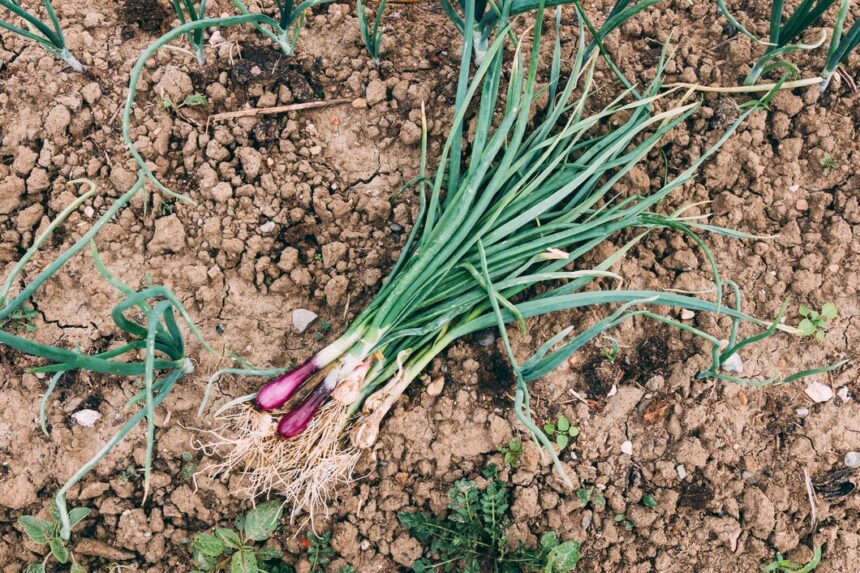Onions are a staple in many kitchens, providing flavor and aroma to a wide array of dishes. However, these versatile vegetables are not immune to pests, and one of the most common onion pests is the thrips. Thrips are tiny, slender insects that can cause significant damage to onion crops if left unchecked. Identifying thrips infestations early is crucial for effective pest management. Here are ten early signs that your onions may be infested with thrips:
- Stunted Growth: Thrips feed on onion leaves, sucking out the plant’s juices and causing stunted growth. If your onion plants are not growing as vigorously as expected, thrips could be the culprit.
- Silvering or Bronzing of Leaves: Thrips feeding on onion leaves can cause them to take on a silvery or bronzed appearance. This discoloration is often one of the first visible signs of a thrips infestation.
- Distorted Leaves: As thrips feed on onion foliage, they can cause leaves to become distorted or twisted. Keep an eye out for leaves that appear misshapen or abnormal.
- White Specks or Streaks on Leaves: Thrips excrete a substance called honeydew as they feed, which can leave behind white specks or streaks on onion leaves. This sugary residue may also attract other pests, such as ants.
- Wilted or Yellowing Leaves: Thrips feeding can lead to wilting or yellowing of onion leaves, similar to symptoms caused by other stress factors such as drought or nutrient deficiencies. However, if these symptoms are present alongside other signs of thrips infestation, it’s likely that thrips are to blame.
- Presence of Adult Thrips: Adult thrips are tiny, winged insects that may be visible on onion plants, especially when disturbed. Look closely at the undersides of leaves for these pests, which are usually less than 1/16 inch long and vary in color from yellow to brown.
- Black, Sooty Mold: Honeydew excreted by thrips can serve as a substrate for the growth of black, sooty mold. If you notice dark, powdery growth on your onion plants, it could indicate the presence of thrips.
- Thrips in Flowers: Thrips are also known to feed on onion flowers, which can cause them to become distorted or discolored. Check onion blooms for signs of thrips feeding damage, particularly if other symptoms are present.
- Presence of Thrips Eggs: Thrips lay their eggs on plant tissue, often in hidden or protected areas such as leaf crevices. Carefully inspect onion leaves for tiny, pale eggs, which may indicate an infestation.
- Reduced Yield: Severe thrips infestations can significantly reduce onion yields. If you notice a decrease in the number or size of your onion bulbs at harvest time, thrips may be to blame.
Early detection and intervention are key to managing thrips infestations in onion crops. If you suspect thrips are present in your onion patch, consider implementing integrated pest management strategies, such as the use of beneficial insects, insecticidal soaps, or botanical insecticides. Regular monitoring and prompt action can help protect your onion plants from the damaging effects of thrips infestation.
Join 'Farmers Mag' WhatsApp Channel
Get the latest Farming news and tips delivered straight to your WhatsApp
CLICK HERE TO JOIN






